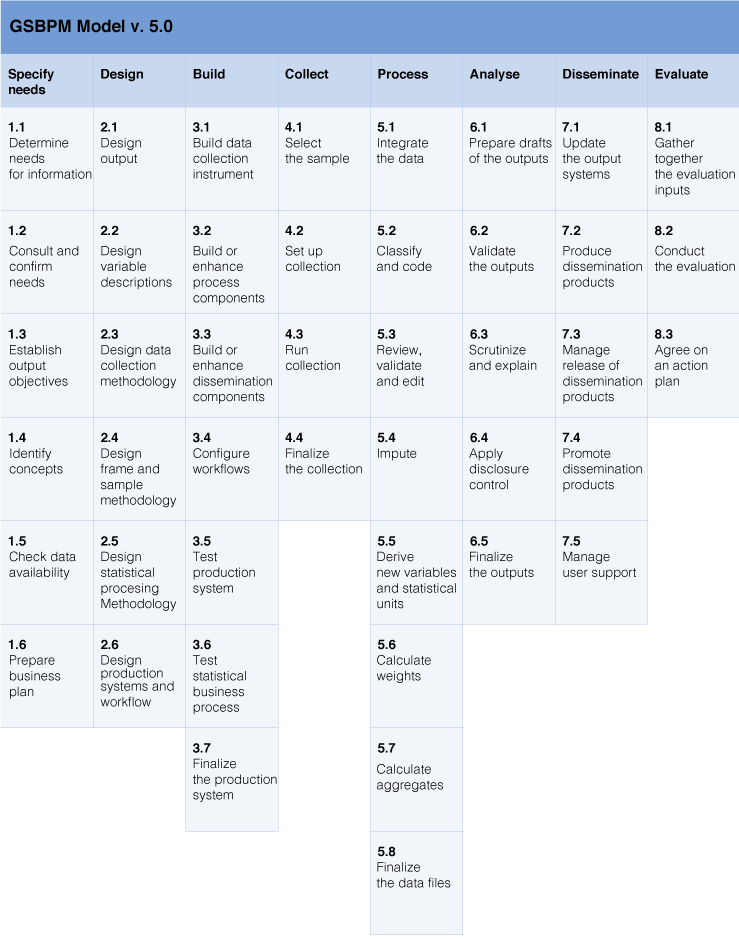Qualitas Project
The Qualitas Project consists of the description of statistical processes adapted to an integrated information environment. In order to achieve maximum efficiency in statistical production, it is necessary that all the available information works together in describing a complex and changing social and economic reality.

In a first phase, the Qualitas Project has carried out a full and accurate description of the processes in which Idescat is working, using the GSBPM model, as a guide, an international standard developed and adopted by the OECD, Eurostat and the UNECE. The transformation and integration into the Cerdà Platform is being worked on, based on some 70 projects already documented.
The aim of the Qualitas Project is twofold: on the one hand, to use the detailed documentation of the processes to ensure quality (relevance, timeliness, efficiency, accuracy and reliability, coherence and comparability, accessibility and clarity); and on the other hand, to provide a guide and control, at different levels, regarding the following aspects:
- The automation of the phases of the process where possible.
- The people involved in the process.
- Improving and taking advantage of interaction between the different processes.
- The experts interested in the details of the development of statistics.
- The client potentially interested in the information produced.